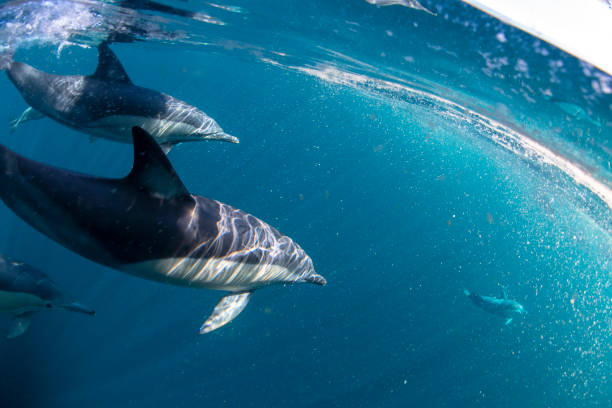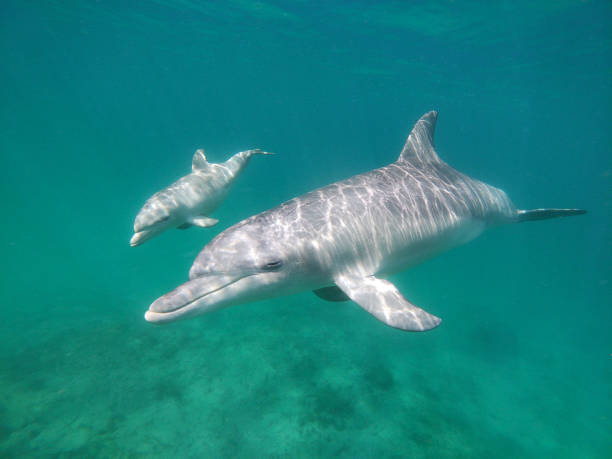You know instantly when someone is speaking to an infant or small child.
It turns out that dolphin mothers also use a kind of high-pitched baby talk.
A study published Monday found that female bottlenose dolphins change their tone when addressing their calves.
Researchers recorded the signature whistles of 19 mother dolphins in Florida, when accompanied by their young offspring and when swimming alone or with other adults.
The dolphin signature whistle is a unique and important signal — akin to calling out their own name.
“They use these whistles to keep track of each other. They’re periodically saying, ‘I’m here, I’m here’,” said study co-author Laela Sayigh, a Woods Hole Oceanographic Institution marine biologist in Massachusetts.
When directing the signal to their calves, the mother’s whistle pitch is higher and her pitch range is greater than usual, according to the study published in the journal, Proceedings of the National Academy of Sciences.

A new study shows that dolphin mothers use high-pitched sounds to communicate with their babies. Getty Images/iStockphoto
“That was true for every one of the moms in the study, all 19 of them,” said biologist Peter Tyack, a study co-author from the University of St. Andrews in Scotland.
Obtaining this data was no simple feat. Over more than three decades, scientists placed special microphones multiple times on the same wild dolphin mothers in Florida’s Sarasota Bay to record their signature whistles.
That included years when they had calves and when they didn’t — dolphin calves stay with their mothers for an average of three years in Sarasota, and sometimes longer. Fathers don’t play a prolonged role in parenting.

When a mother dolphin is communicating with their babies, their ‘signature whistle’ gets higher. Getty Images/iStockphoto
“This is unprecedented, absolutely fantastic data,” said Mauricio Cantor, an Oregon State University marine biologist who was not involved in the study. “This study is the result of so much research effort.”
Why people, dolphins or other creatures use baby talk isn’t certain, but scientists believe it may help offspring learn to pronounce novel sounds.
Research dating back to the 1980s suggests that human infants may pay more attention to speech with a greater pitch range.
Female rhesus monkeys may alter their calls to attract and hold offspring’s attention.

These higher pitched whistles are similar to how a human talks to a small child. Getty Images/iStockphoto
And Zebra finches elevate their pitch and slow down their songs to address chicks, perhaps making it easier to learn birdsong.
For the dolphin study, the researchers focused solely on the signature call, so they don’t know if dolphins also use baby talk for other exchanges — or whether it helps their offspring learn to “talk” as it seems to do with humans.
“It would make sense if there are similar adaptations in bottlenose dolphins — a long-lived, highly acoustic species,” where calves must learn to vocalize many sounds to communicate, said Frants Jensen, a behavioral ecologist at Denmark’s Aarhus University and a study co-author.
Another possible reason for using specific pitches is to catch the kids’ attention.
“It’s really important for a calf to know ‘Oh, Mom is talking to me now’ __ versus just announcing her presence to someone else,” added Janet Mann, a marine biologist at Georgetown University, who was not involved in the study.









